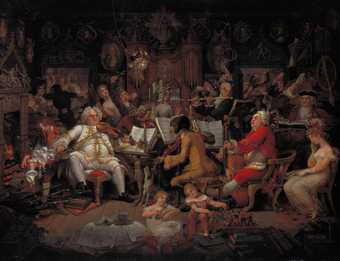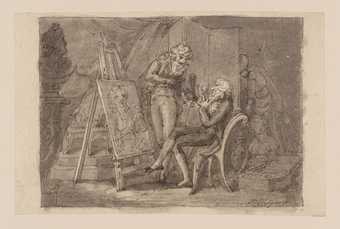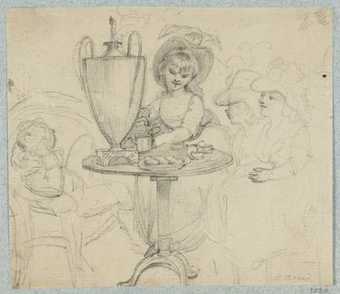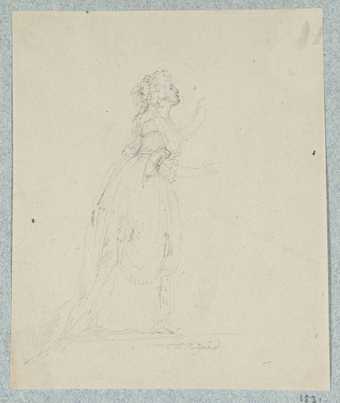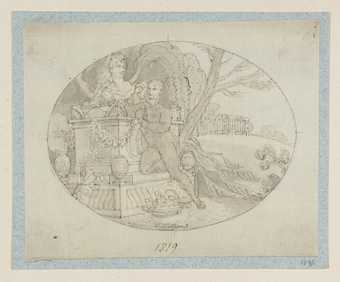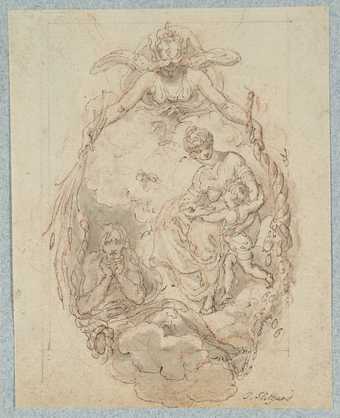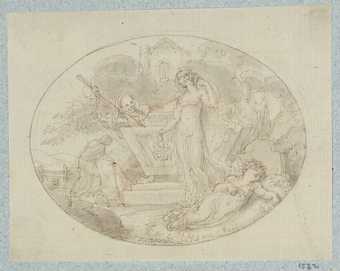In Tate Britain
Artist biography
Burney came from a family prominent in the arts. His uncle was the musicologist Dr Charles Burney and his cousin the writer Fanny Burney. Edward Burney enrolled in the Royal Academy School in 1776, staying until sometime in the early 1780s. He became acquainted with James Barry and other less prominent artists, and was soon encouraged in his career by the Academy President, Joshua Reynolds. A virtuoso draughtsman, Burney devoted the greater part of his career to producing book illustrations, although he also painted some portraits. He rarely exhibited at the Royal Academy, and never married. His performances on the violin as part of amateur private concerts receive occasional mention in contemporary journals.
Burney possessed a fine comic sense and his use of wit and irony, combined with his somewhat rococo drawing style, connects him with William Hogarth. His most important and interesting work is a set of four large watercolours from the 1820s in which he satirises contemporary musical and social life. Two of these are in the Victoria and Albert Museum, London and two are in the Yale Center for British Art, New Haven, Connecticut. The Tate Gallery owns an oil version of one of the Yale watercolours, Amateurs of Tye-Wig Music ('Musicians of the Old School') , c.1820 (Tate Gallery T07278).
Further reading:
Patricia Crown, 'Visual Music: E.F. Burney and a Hogarth Revival', Bulletin of Research in the Humanities, vol.83, no.4, winter 1980, pp.435-72
Terry
Riggs
December 1997
Wikipedia entry
Edward Francis Burney (1760–1848) was an English artist. His middle name is sometimes given as "Francisco" or "Francesco".
This biography is from Wikipedia under an Attribution-ShareAlike Creative Commons License. Spotted a problem? Let us know.
Read full Wikipedia entryArtworks
-
Edward Francis Burney Amateurs of Tye-Wig Music (‘Musicians of the Old School’)
c.1820 -
Thomas Stothard, formerly attributed to Edward Francis Burney The Painter Who Pleased Nobody and Everybody
date not known -
Edward Francis Burney Girls at a Tea Urn
date not known -
Edward Francis Burney Tragedy Actress
date not known -
Edward Francis Burney The Widower: Vignette
1819 -
Edward Francis Burney Love, an Allegory. Vignette
date not known -
Edward Francis Burney Dance of Death: Vignette
date not known


